

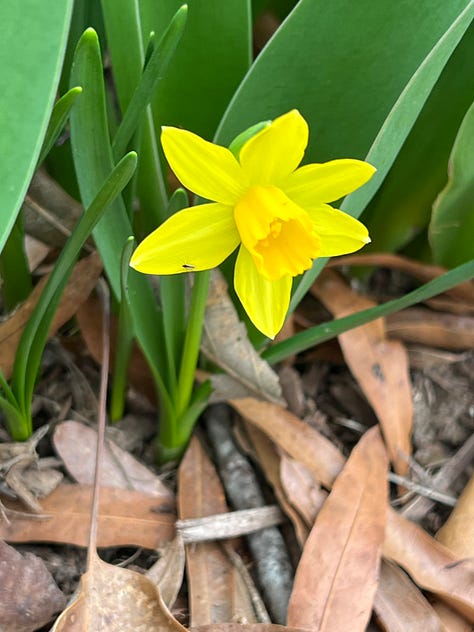
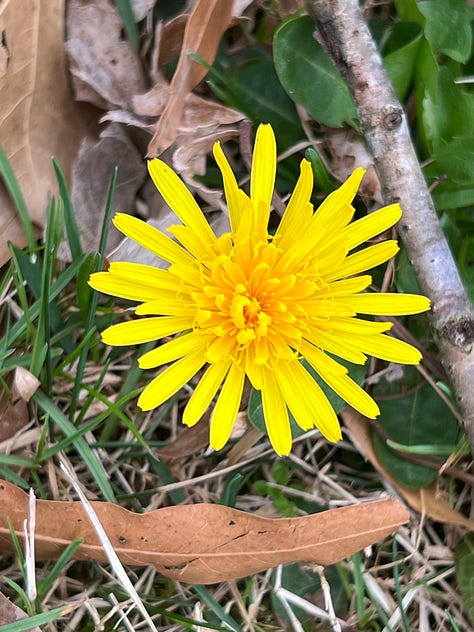


As we arrive at the start of spring, I am reminded of the messiness of this season. The mud, the high winds blowing around dried plant matter that held on through winter and now lets go, dispersing seeds as well as sticks, leaves, and other bits.
Symbolically, Spring feels like a particularly creative season, rich in metaphors for the creative process.
I think there are also some similarities in the ways we think of Spring and the reality of the messiness of this season of growth. It isn’t all sunshine and blossoms. There is also the messiness of rain, mud, winds, last year’s dried out matter continuing to fall away even as new shoots of growth emerge.
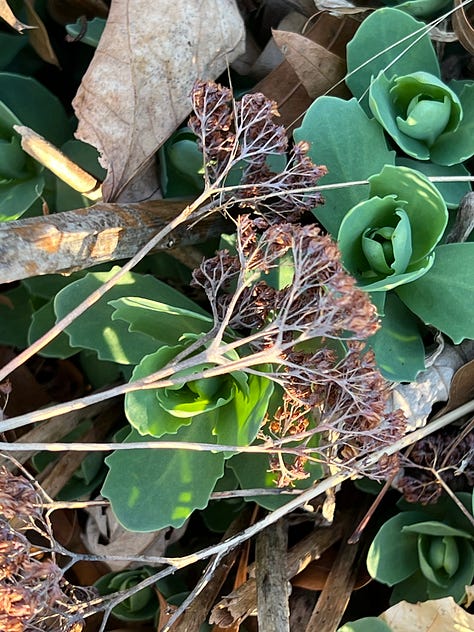
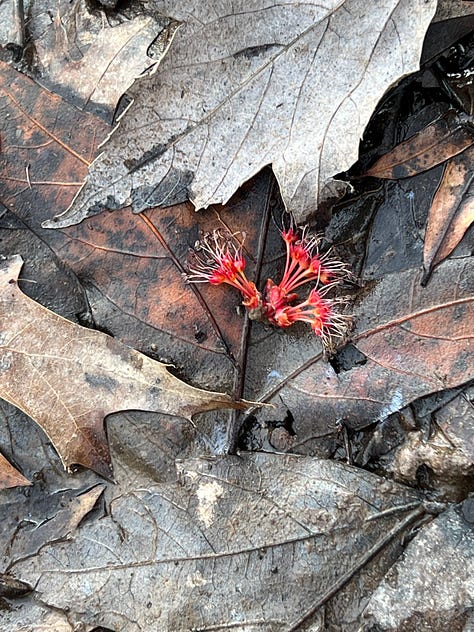
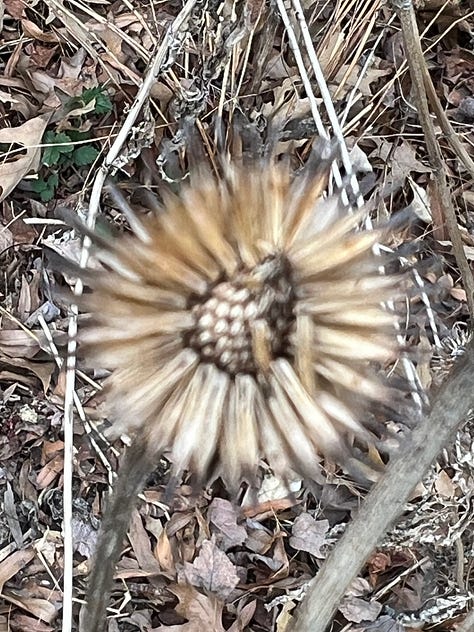
I have been writing about improvisation this past month, another messy process. I wrote the last newsletter about showing up to something alive, about the way that interactions in real time and space energize us.
I was thankful too for those readers who introduced a conversation and challenged me on the idea that on-line meetings do not contain this aliveness. For me, on-line meetings that allow face to face interaction and conversation across distance are very much alive with interactions. I’ve expanded my sense of what it means to show up to a relationship to something alive and feel grateful for the ways this is facilitated across distance by technology.
As I write about improvisation, I also notice ways that showing up is where we begin. Improvisation has two meanings relevant to creative practice. The first is the idea that things are created spontaneously in the moment and the second is that creations happen with what is readily available in the moment.
Courage and trust are central to improvisation. We have to have courage to show up and allow ourselves to be seen in the messiness of creating. We do not know exactly how things will proceed, or what people, places and events will be our collaborators. We have to trust that the setting, and those who come to join us will provide what we need, that we will be able to figure things out together as we proceed.
I taught high school art when I was first out of college. The best advice I received was from a seasoned teacher who suggested I be sure to draw in front of my students.
At first this was fairly simple; I planned simple demonstration drawings for skills exercises to emphasize outline, perspective, and depicting light and shadow. As we progressed toward combining skills in still life and portrait drawing, I discovered that facing the blank page and beginning was even more intimidating with a room full of students watching me. To demonstrate drawing from life, I had to really draw what I observed in real time and this was vulnerable. I was grateful for the advice of a mentor to remind me this was important.
Drawing in front of my class, I was allowing myself to be seen in the messiness of not knowing, to demonstrate the first tentative steps of a drawing, the early erasures, the way the first marks on a page helped hand, eye, and drawing to begin a conversation with the subject of the drawing. I felt the vulnerability of drawing in front of a group of teens only a handful of years younger (and much cooler) than I was. The students seemed to sense this vulnerability too. Some seemed to enjoy the chance to critique my marks, pointing out where I was off in my sense of proportion. Others seemed to increase their trust in me, I gained some credibility as I was willing to engage in the same process I was asking of them. How I responded to critique or attention from students mattered.
Drawing in front of my students was about making the drawing process visible, about modeling the skills and practices I wanted to teach. My improvisation also communicated that this was a process that was about learning by doing, about beginning with the skills you had and trusting yourself to figure it out along the way.
I’d love to hear about your experiences too.
Where are you witnessing creation in the natural world this spring?
Where in your work or life have you been the one to model creating and let others witness your process? How did it feel? How was improvisation a part of your process?
As I have been writing about improvisation, I realize how important this is in creative practice, including the creative practice of living our lives.
Thank you for reading, sharing, and being part of creative community through this newsletter.
With a grateful heart,
Kathryn




Oh I forgot to mention the most wonderful thing about improv, I think! It's a continued conversation, with the phrase, "yes, and..." in there to keep the conversation going!
My daughter and I are talking about intertwining our media. I'm mostly a painter (well, an amateur one at best), and she is a textile artist. I love, love fabric and everything textiles also, and have dabbled a little, more lately thanks to Julia. We were talking about piecing in quilting, and those beautiful "crazy quilts" such as the classic Gee's Bend quilts (which of course go much deeper than the process of quilting itself). She just mentioned to me she's looking into Improv piecing - free improv - free piecing. I imagine it's deconstructing and reconstructing to make a new expression. I can see this in collage also! We've been working kind of parallel for a few years now, me trying to find my artistic voice. I'm going deeper into creating from a place of faith and spiritual understanding of the creative process. It's messy and it's beautiful!